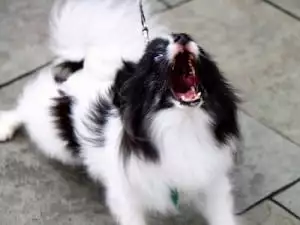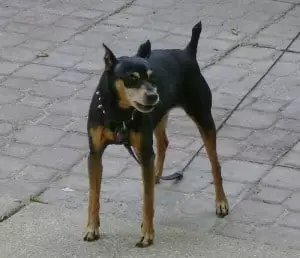Here we go with the basics of dog’s language – bear with us and let’s start learning.
How do we communicate with our dog? If you love your dog as much as I do, I?m sure that you?ve been wondering what the lovely puppy would like to tell you write now.
Basics of dog’s language
Here we go with the first part of our lesson which is focused on how to communicate with your pet. To learn dog?s language is a real challenge and we all want to communicate without any problems. Is it hard to learn or it?s just difficult to start?
I used to say that those who observe the reactions in communications are people who like to win. If you look carefully at the reactions of your puppy, you can get to know it well enough to guess fairly accurately what happens.
To be close to the most probable reason for an action, you just need to analyze the most significant signs.
What does this barking indicate?

A dog that does not bark is like a radio without speakers. You might be laughing right now, but I know what I?m talking about. The power of barking is a valuable source of information for us, dog owners: the low tones represent threats, possible attack and even anger. However, we should also consider the following: if your dog is playing with the low bark, this could be a symptom of?just having fun.
For example, short and sharp barking during the dispute of an object means that your dog remains focused and the ultimate goal is to win.
On the other hand, when we hear high barking, we may recognize situations of having pain, fear or even joy (Yes, some dog breeds adopt high barking for just having fun like “singing”).
Man?s best friend uses similar to our approach. We are almost silent when we are sad and we tend to talk loudly if we want to express satisfaction, happiness and sometimes anger.
It is also important to assess the frequency and duration of barking. If these are rapid and in short intervals, there is no doubt that your friend wants to go outside. By contrast, if we hear the fast and continuous barking, are fast and continuous, then our puppy would like to communicate their concern and nervousness.
The greeting is usually one or two barks, sharp and short.
Continued and rapid barks with a medium tone are a symbol of alert. This means that your friend may want to announce that there is something nearby or a stranger approaches the area.
Who’s there? The barking is interrupted, with shorter or longer intervals between each other, this means that the pet wants to find out who or what is lurking around the corner.
No more! When a dog wants to end a situation that you dislike, it modulates the loud barking to a sharp and very brief bark.
Not all dog grunts can be interpreted as a threat. This form of expression ranges from the extreme pleasure to wild anger.

I’m having a great time: when a dog growls softly and the expression reveals no teeth, this can only be a sign of pleasure. Yet, remember that you should never tolerate growling. This is a sign of a threat and it means your dog sees you as a subordinate who dominates the situation. You should firmly say ?No? to show that growling is never acceptable.
I have fear: the dogs only know one way to express fear or insecurity, and this is with expressing irregular grunts which intensity varies.
Get out of my way: a mad dog that wants to send a warning to his opponent just produces a steady gentle growl. As the frequency rises, the threat is approaching and it?s a sign that a battle will begin.
How it really hurts: If you step on a dog’s tail (hope it will never happen!), you will hear a brief howl, equivalent to human sounds. It?s the answer to a pain that has come by surprise.
I’m scared to death: it?s exactly the same as above but it?s accompanied by fearful attitudes (hidden tail and sometimes howls in short intervals)
I want to play, baby: when the howls are repetitive, sharp and are issued in a rising tone, the dog tries to draw your attention and would like to make you understand that it is craving for having fun!
Moaning worth giving a notice
Dog?s moaning is usually accompanied by gestures and droopy eyes (I?m sure that now the cartoon hero Droopy is what you are thinking about). Moan is a unique sound with three interpretations: hunger, cold and fear.
To find out what happens, you just need to rely on external factors: low temperatures, state of loneliness… When your older dog is moaning, this has other connotations: most likely you should be prepared for a walk outside.
Moaning in general is a normal means of vocal expression for many dogs. It?s not sign of an abnormality as you might think in the first place, but you should just observe dog?s behavior to find out whether this is a case of having emotional discomfort, pain or another form of complaint/request. It is believed that moaning varies between breeds and individual dogs. Once I learn more on my own, I will provide further information.
Sighs: disappointment or pleasure
While reading this blog, you will learn a lot for my puppy, Kimcho, a lovely pinscher. His photo is here?. So my Kimcho loves sighing and honestly this is the cutest expression that I adore.

A sigh means disappointment or pleasure, depending on your situation. In my case, he gives a sign whenever we don?t have enough time to play together.
When the sigh is expressed with obviously open eyes, the dog is expressing some disappointment: something he was sure that was going to happen, but it wouldn?t . If, however, the puppy squints, this is a facial expression of the total happiness: all that surrounds him gives him pleasure.
Dog roars and the symbol of power
The roar is the language of hunting, and it demonstrates power and security. If you hear the howling roar, then the pet is saying something like “here I am”.
What does the language tell us? Share with us your personal experience since this topic will be further expanded on the blog!
Thank you for the photos: credits go for iamruby, paxrock, Mr.T in DC, alexbalan.





